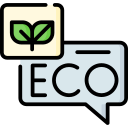
Creating Authentic Sustainability Messages in Marketing
Chosen theme: Creating Authentic Sustainability Messages in Marketing. Welcome—this is your space to craft honest, resonant sustainability stories that build trust, inspire action, and invite dialogue. Subscribe, comment with your experiences, and help shape messages that genuinely move people and markets.
Defining Authenticity in Sustainability Marketing
Audiences value honesty more than flawless optics. Say exactly what improved, what did not, and what comes next. Authentic sustainability messages acknowledge trade-offs, constraints, and learning, making room for credible progress instead of performative promises. Share one real lesson learned today.

Anchor every statement to a specific product, facility, or timeframe. Replace “eco-friendly” with “uses 42% recycled aluminum, verified by third-party records, 2024 production run.” Link to the source. Ask readers if the claim feels clear and sufficient, then refine based on their replies.
Guardrails Against Greenwashing



Data, Metrics, and Lifecycle Proof
01
Lifecycle Thinking Made Practical
Clarify boundaries: cradle-to-gate or cradle-to-grave. Publish assumptions and sensitivity ranges, not just the final number. Invite independent review. Ask subscribers which lifecycle stage they worry about most, and commit to a deep-dive explainer based on their votes.
02
Show, Don’t Obscure
Use simple visuals: per-unit impact, year-over-year trend, and benchmark versus industry average. Pair charts with one paragraph interpreting what changed and why. Encourage readers to request a dataset download, then host a live Q&A to unpack the methods together.
03
Proof Points People Can Touch
Create transparency hubs with receipts: energy bills, audit summaries, supplier letters, and repair rates. Add plain-language captions beneath each artifact. Invite readers to propose one additional document that would strengthen confidence, and update the hub publicly when you add it.
Language That Resonates Without Preaching
Swap terms like “eco-conscious solutions” for direct statements: “We reduced average parcel emissions by 19% through route consolidation and rail.” Test copy with real customers, not just internal teams. Ask readers to rewrite one vague sentence below—best edit gets featured next week.
Language That Resonates Without Preaching
Sustainability is local. Avoid one-size-fits-all tropes; reflect community priorities, languages, and constraints. Credit partners fairly. Invite voices from supplier regions to review your drafts. Encourage subscribers to recommend translators or cultural advisors who can strengthen accuracy and respect.

Engagement, Accountability, and Iteration
01
Host quarterly listening sessions and comment-driven updates. Summarize what you heard and what you changed. Create a public backlog for messaging improvements. Invite subscribers to upvote priorities and nominate community experts to join panels reviewing difficult trade-offs.
02
When setbacks happen, share them promptly with context, corrective actions, and timelines. A logistics hiccup that raised emissions can become a case study in resilience. Ask readers what information would make them feel heard, then publish answers and track progress visibly.
03
Mark milestones without exaggeration. Pair every win with the next unresolved challenge and a date for your next update. Invite readers to subscribe for milestone alerts, and ask them which success metric deserves a permanent spot on your homepage scoreboard.
